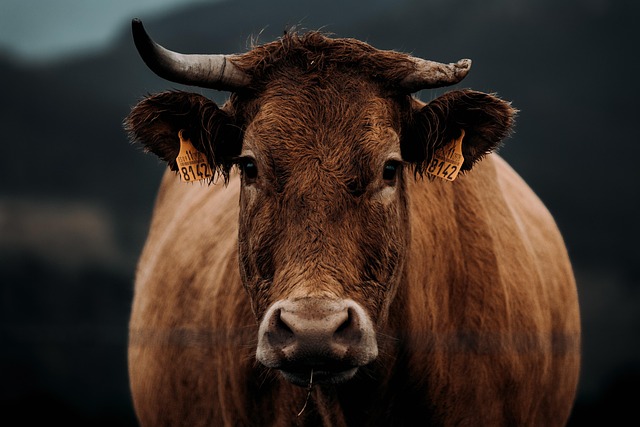Animal husbandry, the practice of raising livestock for food, fiber, and other products, has long been associated with greenhouse gas emissions. However, recent advances in management practices are transforming this sector into a powerful tool for climate mitigation. By aligning production with ecological principles, farmers can lower methane output, sequester carbon in soils, and create resilient food systems that thrive under changing climatic conditions.
From Conventional to Regenerative: The Shift in Mindset
The traditional model of animal husbandry focused on maximizing output per animal, often at the expense of soil health and ecosystem services. Regenerative approaches invert this logic: the goal is to improve the environment while meeting human needs. Practices such as rotational grazing, cover cropping, and integration of silvopastoral systems replace the one‑size‑fits‑all model with site‑specific, adaptive strategies that enhance biodiversity and reduce reliance on external inputs.
- Rotational grazing spreads animals across multiple paddocks, preventing overgrazing.
- Cover crops fix atmospheric nitrogen, reduce erosion, and add organic matter.
- Silvopasture mixes trees with pasture, providing shade and additional carbon sinks.
Reducing Methane Through Dietary Innovations
Methane, a potent greenhouse gas, is a major by‑product of ruminant digestion. By adjusting feed composition, farmers can significantly lower enteric fermentation. High‑energy, low‑fiber diets, coupled with feed additives such as seaweed or nitrates, reduce the time rumen microbes spend breaking down plant material, thus cutting methane emissions per unit of animal product.
“When we switched to a 30% higher concentrate diet and added a small amount of fermented seaweed, we saw a 15% drop in methane per kilogram of meat,” explains a rancher who has implemented these changes over the past year.
The Role of Pasture Management in Carbon Sequestration
Healthy pastures store more carbon in soil than bare or over‑cultivated fields. By promoting deep-rooted grasses and legumes, animal husbandry can transform landscapes into living carbon sinks. Continuous grazing, when practiced correctly, stimulates root growth, increases microbial activity, and enhances soil organic matter—all key drivers of long‑term carbon storage.
When pasture management is coupled with reduced tillage and minimal fertilizer application, the net effect is a measurable decline in atmospheric CO₂ levels. This dual benefit of feeding livestock and capturing carbon underscores the multifaceted value of regenerative animal husbandry.
Water Stewardship and Reduced Emissions
Water use is tightly linked to emissions. Efficient irrigation systems, coupled with drought‑resistant forage species, lower the energy required for pumping and reduce the carbon intensity of livestock production. Additionally, improved water retention in managed pastures diminishes the need for supplemental feeding during dry periods, indirectly cutting emissions associated with feed transport and processing.
- Adopt drip irrigation in dryland farms to conserve water.
- Plant native grasses that require less supplemental irrigation.
- Use soil moisture sensors to time irrigation precisely.
Integration of Livestock and Forestry: Silvopasture
Silvopasture blends trees, forage, and livestock into a single, multifunctional system. Trees absorb CO₂ while providing shade and forage improvement, reducing heat stress on animals. The resulting microclimate lowers the need for supplemental cooling and reduces feed conversion ratios. Moreover, the root systems of trees improve soil structure, increase water infiltration, and further enhance carbon sequestration.
Policy and Incentives Driving Sustainable Practices
Governments worldwide are recognizing the climate benefits of sustainable animal husbandry. Subsidies for cover crop planting, tax credits for regenerative grazing, and payment for ecosystem services schemes are incentivizing farmers to adopt low‑emission practices. In addition, certification programs for meat and dairy products that meet stringent environmental standards are increasing market value for responsibly raised livestock.
These policy tools not only reward individual farmers but also signal a broader market shift toward climate‑conscious consumption.
Consumer Demand and the Market Shift
Modern consumers are increasingly aware of the environmental footprint of their food choices. Transparency in sourcing, labeling that highlights regenerative practices, and storytelling around farm stewardship create a direct link between responsible animal husbandry and consumer trust. This demand for sustainable products drives the adoption of low‑emission techniques across the supply chain.
When producers can prove that their livestock are raised on practices that cut emissions, they gain a competitive edge, opening pathways to premium markets and higher profit margins.
Measuring Impact: From Farm to Global Scale
Accurate measurement is essential for verifying the emissions reductions achieved through regenerative animal husbandry. Soil carbon monitoring, methane flux assessments, and life‑cycle analysis provide data that can inform policy, guide best practices, and ensure transparency. Emerging technologies, such as drone‑based hyperspectral imaging, enable rapid, large‑scale assessments of pasture health and carbon stocks, making it easier for farmers to track progress.
Looking Ahead: The Future of Animal Husbandry in Climate Mitigation
The trajectory of animal husbandry is moving toward holistic, systems‑based approaches that balance production with environmental stewardship. As research advances, we anticipate even greater efficiencies in feed conversion, methane mitigation, and soil carbon sequestration. Coupled with supportive policy frameworks and shifting consumer expectations, regenerative animal husbandry stands poised to become a cornerstone of global climate strategy.
By reimagining livestock production as a catalyst for ecological restoration, we can secure both food security and a healthier planet for generations to come.



